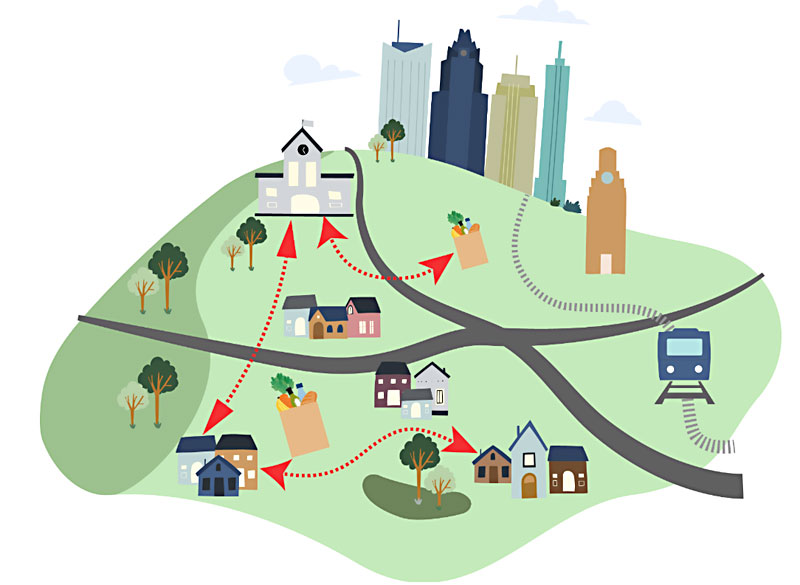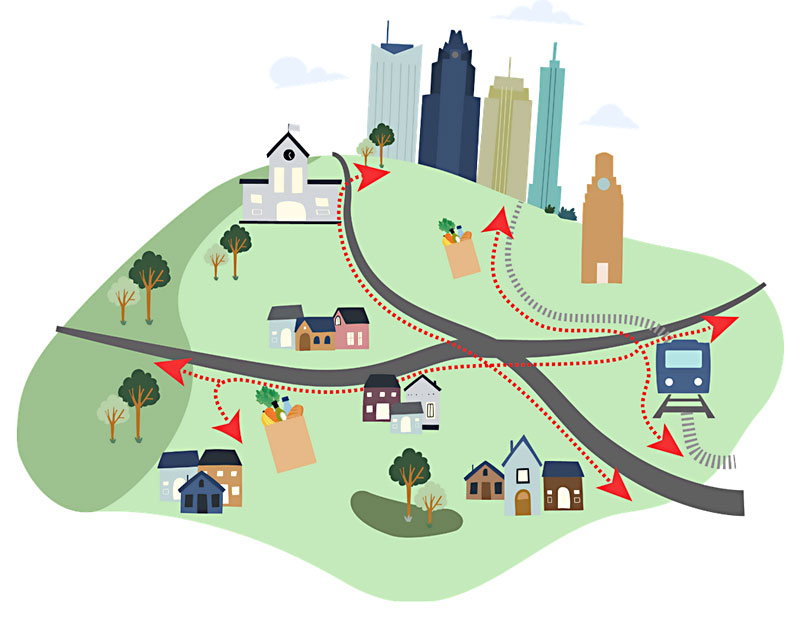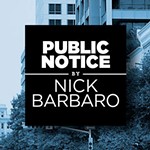Public Notice: Mobility for All
Three visions for our transportation future
By Nick Barbaro, Fri., Sept. 30, 2022
As Project Connect wends its way from being a transit plan to being a transit network, it's becoming increasingly clear that, by itself, its reach is limited: Unless you live, and work, and shop within a few blocks of a station, it's not going to do much for you, until someone fixes the "last mile" problems. And even then, as the city grows, if we get half the people out of their cars, but the population doubles, don't we still have just as many gas guzzlers on the road? It's hard to get ahead of the curve, but various people are trying. Here are three different visions that have been released in the past week or so, ranging from fairly conventional to one that calls for disruptive change.
Austin Climate Equity Plan
When City Council got its quarterly update on the equity plan this week, the focus was on Transportation Electrification, one of the initiative's five goal areas (along with consumption of goods, transportation & land use, natural systems, and sustainable buildings). The report highlights some successes, and lays out three goals to achieve by 2030:
• 40% of Austin vehicle miles should be electric, with EV "ownership culturally, geographically, economically diverse."
• We should have enough charging capacity – again, "equitably distributed" around town – to accommodate all that travel.
• Austin-Round Rock-San Marcos area leads in transportation electrification, in policy and technology, "supporting industry growth."
So the emphasis here is primarily on encouraging EV ownership. As one presentation slide puts it: "Not driving a car is the best option for climate change, but cars are currently somewhat necessary in Austin." For their part, the Austin Transportation Department notes that it's adding 330 electric vehicles to the city fleet by the end of this year, and "due to higher gas prices, cost savings to date are ahead of initial forecasts." Capital Metro is also electrifying (read more) and will be 100% electric by 2035. As for individuals, the report touts the city's EV Buyer's Guide, the developing charging network, and e-bikes, and notes that the market is trending toward EVs. See the report at austintexas.gov/page/austin- climate-equity-plan.
ATX Walk Bike Roll
This cross-departmental city project is intended to update the city's official Urban Trail, Sidewalk, and Bicycle Plans. And after a year of community input, Public Works and ATD are presenting three scenarios for the future (see illustrations below), asking for further feedback on these and other policy questions in a virtual open house and a 15-minute survey through Oct. 23. These include the Shared Streets concept – which already piloted successfully a year ago, so what are we waiting for? How about asking every neighborhood association to designate a likely prospect or three? – but also a few striking concepts, such as a "Guaranteed Basic Mobility" program for low-income residents and other ideas to subsidize transit – which is taken here to include e-bikes, scooters, and the like. See it at austintexas.gov/department/atx-walk-bike-roll.
LEAN Mobility
If you read that last paragraph thinking, "Why are we still talking about this instead of doing it?" then perhaps the Institute for Community MicroMobility is for you. It has a new report out as well, and while the mix of transportation options in their Low Emission Alternative Network frankly doesn't seem much different from the city's (they do feature low-speed EVs, or street-legal golf carts), their sense of urgency is at a different level: We need to do this shit now, and notably, we need to start collecting land and funding for it now. Their new product is "a white paper written for Austin's next mayor," whoever that may be, describing the vision: "What if we took this massive building boom and used it to incorporate a protected infrastructure for low-cost, low-speed Tiny Transit into our transportation system?" They would dedicate, for instance, "light trails" along all the new rail and rapid bus lines as well as some existing routes (Loop 360, the Red Line) and require the same sort of commitment of land and money from new developments, public and private. See all about it at micromobilityinstitute.org.
Pick one!
Got something to say on the subject? Send a letter to the editor.











